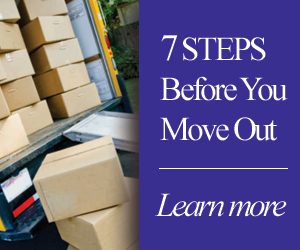Domestic violence or intimate partner violence occurs when people in a close relationship experience an imbalance of power or control. It can take many forms: emotional abuse, sexual abuse, physical abuse, stalking, or threats of any of these actions. Abusive actions may include name calling, control over one’s access to family and friends, stopping one from going to work or school, showing up at work or school with threats and/or weapons, hiding car keys, discarding medications, and threating to take the children away. Usually when we talk about how to resolve these issues and support victims, we do so with a female victim in mind. However, it’s important to know that there is domestic violence help for men as well.
Domestic Violence by the Numbers
Daily, across the US, over 20,000 phone calls are made to domestic violence hotlines. Almost 20 people a minute are physically abused by an intimate partner. Intimate partner violence accounts for 15% of all violent crime. One out of 4 women have experienced intimate partner physical violence; one out of 9 men have suffered the same. Though female victims typically report a higher rate of being beaten or choked and males victims typically report higher rates of being bitten or having something thrown at them, all genders can fall victim to any type of violence.
But, when looking at the numbers, experts, domestic violence shelter workers, law enforcement, and other involved parties all agree: domestic violence is an underreported crime. Typically it is believed and documented that it takes 7 acts against a victim before the victim takes action. Most of society’s messaging against domestic violence is focused on women as the victims due to a higher rate of reports among women, but men can and sadly do experience it as well, in either a heterosexual or same sex relationship. The legal community and other interested groups acknowledge that it is difficult for many men to report their domestic violence victim status.
There are many factors preventing men from seeking help with domestic violence. Victims often feel isolated and ashamed. They have religious beliefs that keep them from seeking help. Many lack economic resources to move away or at least out of the home.
It is also believed that only 20% of male victims come forward regarding the abuse that they are enduring. Many male victims have the fear that they will not be believed; they will be viewed as weak and emasculated; they will be mocked and ridiculed by law enforcement; and if in a same-sex relationship, many men may have not publicly identified as gay and thus, may not wish to do so given the less than appealing circumstances.
Seeking Domestic Violence Help for Men
Far more than just physical and emotional violence affects victims. Sadly, the pain they suffer tends to contribute to the victim’s abuse of substances, alcohol, and risky behaviors. And, in turn, a rise in suicide rates for these victims has been noted. So what can a domestic violence victim do to take some steps towards leaving the abusive relationship and ending their suffering? Here are some suggestions:
Develop a plan to leave the relationship
Prepare an emergency bag where some clothes, medications and cash can be stored. Store your ID in this protected space or at least photos of your ID. Get a second burner phone. Watch your computer use from within your home. Be sure to clear your search history.
Distance yourself from your abuser
Change your passwords on your electronic devices often. Reach out to your local shelters and determine what resources that they have. In North Carolina there are over 90 organizations that provide service to domestic violence victims in over 82 cities. Even if there is not a shelter or center in your town, there will be one perhaps in the next town or city. Document everything.
Find and build a support system
In thinking about your safety/escape plan, be sure you can answer the following questions: Who is a family member or friend with whom I can share my plan? Where in my neighborhood could I go? Are there phone numbers I need to memorize or store in a second phone? How do I include my children in this plan?
Also, look at how technology can assist you. There are several mobile apps that can record conversations, notify 911, and send messages to friends and family that help is needed. Many of these apps have a one button function to activate and can be disguised to look like some other type of app. Even social media can assist you, as there are many anonymous networks and support groups dedicated exclusively to victims of domestic violence search away.
There are also many podcasts that feature survivor’s stories and resources to help you survive and thrive. Resources sometimes feel slim – most are specifically aimed at helping women due to statistics – but much of the advice aimed at one gender is actually applicable to everyone and there are some that specifically focus on helping men escape their abusers. Take advantage of them and if you feel like you are having trouble finding help, contact us. We can provide you with referrals or help you speak to an attorney about your rights. You should never have to go through this alone.





